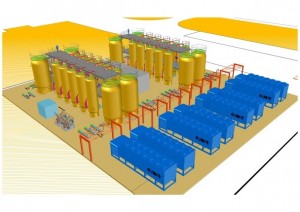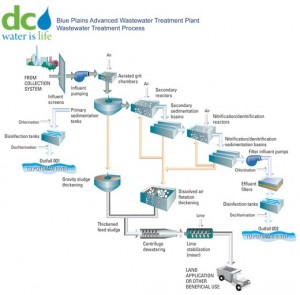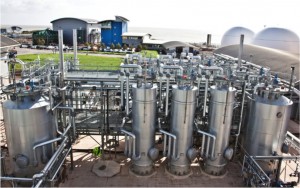In October 2008, just prior to the U.S. presidential election, I drafted a piece entitled ‘Thoughts on an Energy Policy for the New Aministration’. It was published about a month later and republished as my first blog post in May 2013. I said at that time “What I find interesting about this piece is that I could have written it today and not changed too many words, an indication that our country is still struggling to define an energy policy.” This post is my attempt to look back at what I said in 2008 and 2013 and see if my perspectives and views have changed.
In that piece I started off by listing 14 items that I labeled as ‘facts’ on which most can agree. These ‘facts’ are reproduced below, followed by my comments on what may have changed since 2008.
1. People do not value energy, they value the services it makes possible – heating, cooling, transportation, etc. It is in society’s interest to provide these services with the least energy possible, to minimize adverse economic, environmental and national security impacts.
2. Energy has always been critical to human activities, but what differentiates modern societies is the energy required to provide increasingly high levels of services.
3. Population and per capita consumption increases will drive increasing global energy demand in the 21st century. While not preordained, this increase will be large even if others do not achieve U.S. per capita levels of consumption.
4. Electrification increased dramatically in the 20th century and will increase in the 21st century as well. The substitution of electricity for liquid transportation fuels will be a major driver of this continued electrification.
5. Transportation is the fastest growing global energy consumer, and today more than 90% of transportation is powered by petroleum-derived fuels.
6. Globally energy is not in short supply – e.g., the sun pours 6 million quads of radiation annually into our atmosphere (global energy use: 460 quads). There is considerable energy under our feet, in the form of hot water and rock heated by radioactive decay in the earth’s core. What is in short supply is inexpensive energy that people are willing to pay for.
7. Today’s world is powered largely by fossil fuels and this will continue well into the 21st century, given large reserves and devoted infrastructure.
8. Fossil fuel resources are finite and their use will eventually have to be restricted. Cost increases and volatility, already occurring, are likely to limit their use before resource restrictions become dominant.
9. Increasing geographic concentration of traditional fossil fuel supplies in other countries raises national security concerns.
10. The world’s energy infrastructure is highly vulnerable to natural disasters, terrorist attacks and other breakdopwns.
11. Energy imports, a major drain on U.S. financial resources, allow other countries to exert undue influence on U.S. foreign policy and freedom of action.
12. Fossil fuel combustion releases CO2 into the atmosphere (unless captured and sequestered) which mixes globally with a long atmospheric lifetime. Most climate scientists believe increasing CO2 concentrations alter earth’s energy balance with the sun, contributing to global warming.
13. Nuclear power, a non-CO2 emitting energy source, has significant future potential but its widespread deployment faces several critical issues: cost, plant safety, waste storage, and weapons non-proliferation.
14. Renewable energy (solar, wind, biomass, geothermal, ocean) has significant potential for replacing our current fossil fuel based energy system. The transition will take time but we must quickly get on this path.”
What has changed in my opinion are items 9, 11, and 12. The availability of large amounts of home-grown natural gas and oil at competitive prices via hydraulic fracturing (fracking) of shale deposits has turned the U.S. energy picture upside down. It may do that in other countries as well. Whereas the U.S. was importing over 50% of its oil just a few years ago, that fraction is now under 40% and the U.S. is within sight of becoming the largest oil producer in the world, ahead of Russia and Saudi Arabia. Whereas in recent years the U.S. was building port facilities for the import of LNG (liquified natural gas) these sites are being converted into LNG export facilities due to the glut of shale gas released via fracking and the large potential markets for U.S. gas in Europe and Asia (where prices are higher than in the U.S.).
The phenomena of global warming and climate change due to mankind’s combustion of carbon-rich fossil fuels are also becoming better understood, climate change deniers have become less and less visible, and the specific impacts of climate change on weather and water are being actively researched. An important change is the substitution of natural gas for coal in new and existing power plants, which has reduced the share of coal from 50% just a few years ago to less than 40% today. This has reduced U.S. demand for domestic coal, which is now increasingly being sold overseas.
The second part of the 2008 article was a set of 10 recommendations that are reproduced below:
1. Using the bully pulpit, educate the public about energy realities and implications for energy, economic and environmental security.
2. Work with Congress to establish energy efficiency as the cornerstone of national energy policy.
3. Work with Congress to provide an economic environment that supports investments in energy efficiency, including appropriate performance standards and incentives, and setting a long-term, steadily increasing, predictable price on carbon emissions (in coordination with other countries). This will unleash innovation and create new jobs.
4. Consider setting a floor under oil prices, to insure that energy investments are not undermined by falling prices, and using resulting revenues to address equity and other needs.
5. Work with Congress to find an acceptable answer to domestic radioactive waste storage, and with other nations to address nuclear power plant safety issues and establish an international regime for ensuring nonproliferation.
6. Establish a national policy for net metering, to remove barriers to widespread deployment of renewable energy systems.
7. Provide incentives to encourage manufacture and deployment of renewable energy systems that are sufficiently long for markets to develop adequately but are time limited with a non-disruptive phaseout.
8. Aggressively support establishment of a smart national electrical grid, to facilitate use of renewable electricity anywhere in the country and mitigate, with energy storage, the effects of intermittency.
9. Support an aggressive effort on carbon capture and sequestration, to ascertain its feasibility to allow continued use of our extensive coal resources.
10. Remove incentives for fossil fuels that are historical tax code legacies that slow the transition to a new, renewables-based, energy system.
I still support these recommendations, buttressed by the following observations:
– more public education on global warming and climate change has taken place in recent years, and a majority of Americans now accept that global warming is driven by human activities.
– there is a lot of lip service given to the need for increased energy efficiency, and President Obama’s agreement with the auto industry to increase Corporate Average Fuel Economy (CAFE) standards over the next decade is an important step forward. What is lacking, and slowing needed progress toward greater efficiency, is a clear policy statement from the U.S. Congress that identifies and supports energy efficiency as a national priority.
– with the shutting down of the Yucca Mountain long-term radioactive waste storage facility in Nevada, the Obama Administration is searching for alternatives but believes the country has time to come up with a better answer. This may be true, or may not, and only time will tell. It is not a uniquely American problem – other countries are struggling with this issue as well and most seem to favor deep geological storage. This is a problem we will definitely be handing down to our children and grandchildren,
– net metering as a national policy, as is true in several other developed countries, has gone nowhere in the six years since 2008. It is another example of a lack of Congressional leadership in establishing a forward-looking national energy policy.
– progress has been made on moving renewable energy into the energy mainstream, but we have a long way to go. NREL’s June 2012 report entitled ‘Renewable Electricity Futures Study’ made it clear that renewables could supply 80% of U.S. electricity by 2050 if we have the political will and make appropriate investments. The study puts to rest the argument used by the coal and other traditional energy industries that renewables can’t do the job. The public needs to understand that this canard is inaccurate and not in our country’s long term interests.
– the need for a national grid, and localized mini-grids (e.g., on military bases), has been recognized and appropriate investments are bring made to improve this situation. A national smart grid, together with energy storage, are needed to assure maximum utilization of variable clean energy sources such as wind and solar. Other renewable energy sources (geothermal, biomass, hydropower, ocean energy) can be operated as baseload or near base load capacity. And even intermittent wind and solar can supply large amounts of our electricity demand as long as we can transfer power via the national grid and use averaging of these resources over large geographical areas (if the wind isn’t blowing in X it probably is blowing in Y).
– the carbon capture and sequestration effort does not seem to be making much progress, at least as reported in the press. My blog post entitled ‘Carbon Capture and Sequestration: Is It a Viable Technology?’ discusses this issue in some detail.
– with respect to reducing long-standing and continuing subsidies for fossil fuel production, no progress has been made. Despite President Obama’s call for reducing or eliminating these subsidies the Congress has failed to act and is not likely to in the near-term future. This is a serious mistake as these industries are highly profitable and don’t need the subsidies which divert public funds from incentivizing clean energy technologies that are critical to the country’s and the world’s energy future.
– today’s electric utility sector is facing an existential threat that was not highly visible just a few years ago. This threat is to the utility sector’s 100 year old business model that is based on generation from large, centralized power plants distributing their energy via a radial transmission and distribution network. With the emergence of low-cost decentralized generating technologies such as photovoltaics (PV), these business models will have to change, which has happened in Germany and will eventually happen in the U.S. Keep tuned as this revolution unfolds.
As a final word I repeat what I have said in earlier posts: we need to put a long-term, steadily increasing price on carbon emissions that will unleash private sector innovation and generate revenues for investments in America’s future. This is a critical need if we are to successfully address climate change, create new U.S. jobs in the emerging clean energy industry, and set an example for the world.












